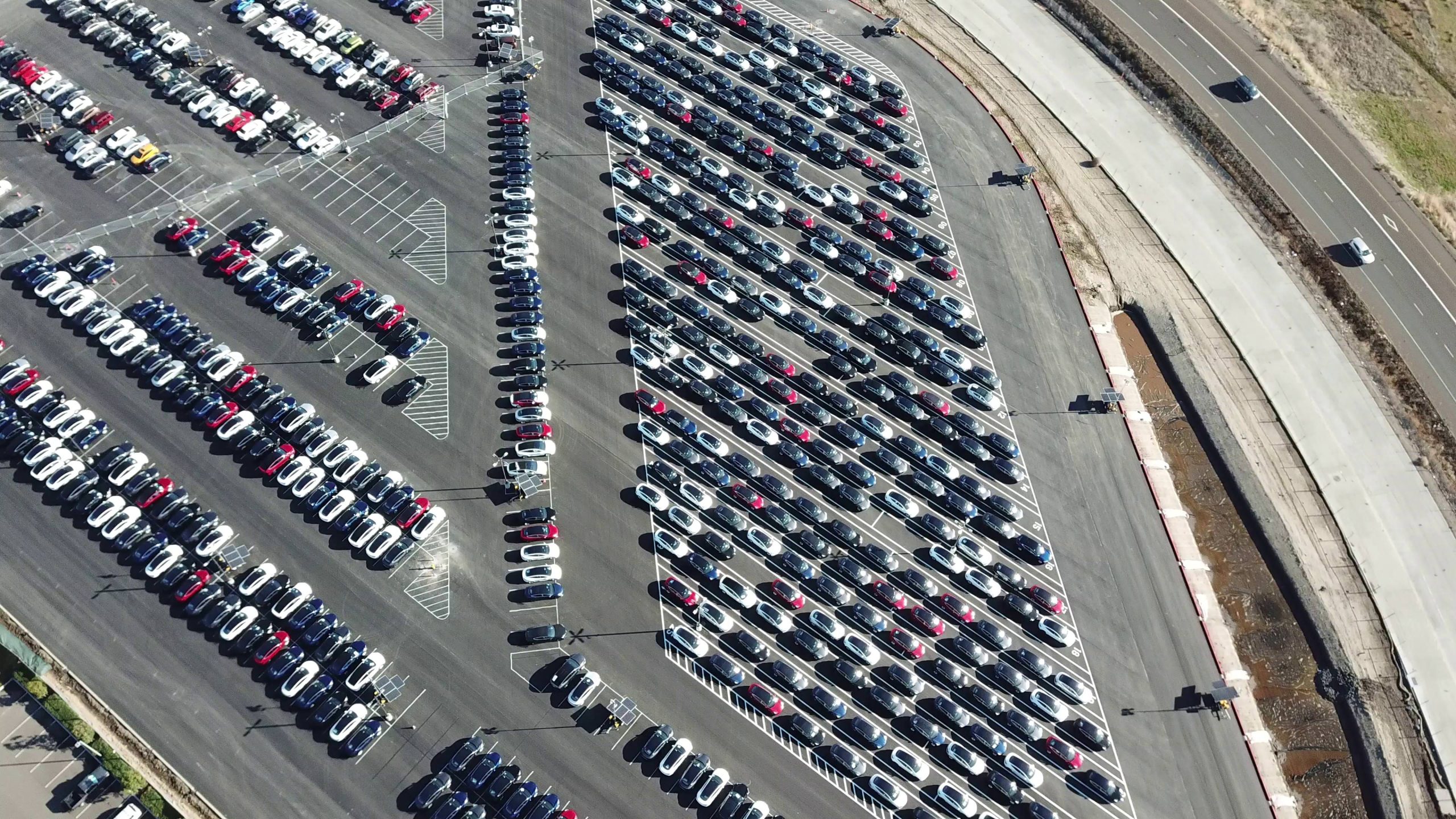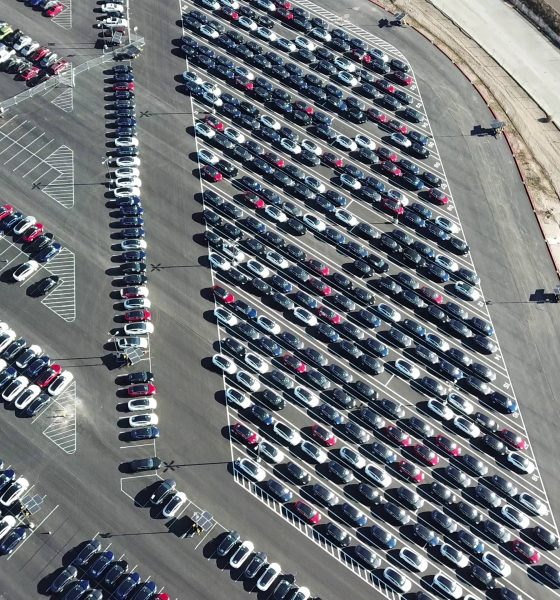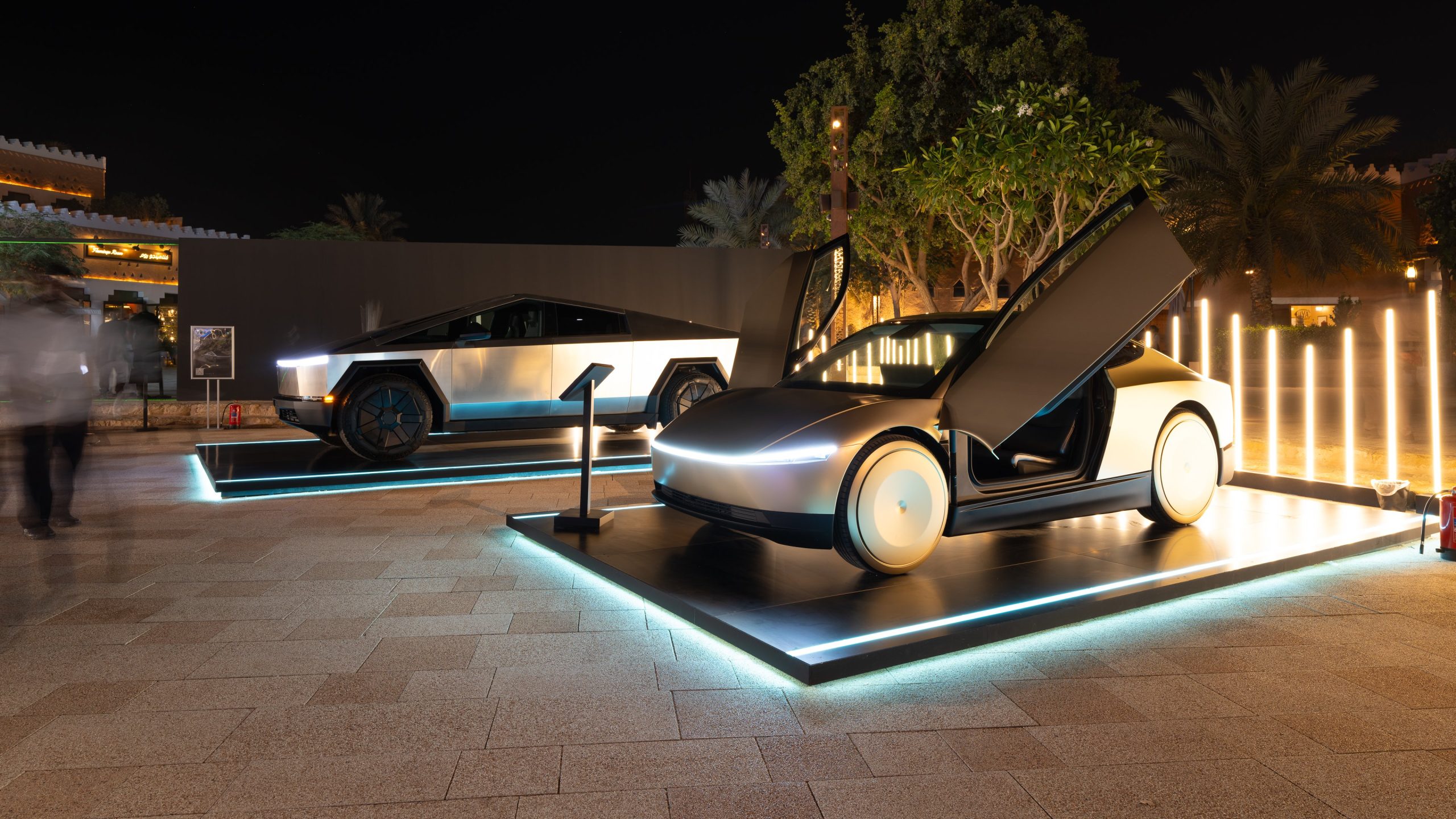

Investor's Corner
Tesla’s Q4 2018 delivery and production report: 63k Model 3 delivered, 86.5k total cars produced
Tesla has released its production and delivery figures for the fourth quarter of 2018, capping off what could only be described as a historic year for the electric car maker. In Q4 2018, Tesla produced a total of 86,555 vehicles, which is 8% more than its prior all-time-high in the third quarter. Deliveries also grew to 90,700 vehicles, a number that’s also 8% more than Q3 2018’s all-time-high.
Tesla’s Q4 production numbers are comprised of 61,394 Model 3 vehicles, in line with the company’s guidance and 15% more than its already notable figures in the third quarter. Tesla also produced a total of 25,161 Model S and X, which is consistent with its long-term run rate of around 100,000 units per year. The more than 90,000 deliveries that Tesla was able to accomplish in Q4 translates to about 1,000 vehicles per day — a notable feat for such a young carmaker. This number is comprised of 63,150 Model 3 (signifying a 13% growth over Q3), 13,500 Model S, and 14,050 Model X vehicles.
Over the course of 2018, Tesla delivered a total of 245,240 vehicles, comprised of 145,846 Model 3, as well as 99,394 Model S and Model X. The company notes in its report that its deliveries in 2018 are almost equal to its total deliveries in all prior years combined. This is despite the electric car maker only producing mid and high-priced variants for the Model 3, and deliveries only being exclusive to North America. Seemingly as a way to highlight the demand for the vehicle, the company pointed out that more than 75% of Model 3 orders in Q4 came from new customers, not reservation holders.
By the end of the quarter, Tesla had 1,010 Model 3 and 1,897 Model S and X that was in transit to customers, which are expected to be delivered in early 2019. The company also notes that its inventory levels remain the smallest in the auto industry, and that its figures for vehicles in transit saw a reduction in Q4 due to improvements in its logistics systems in the North American region.
Apart from reporting record deliveries and production, Tesla also noted that it is rolling out a price adjustment of $2,000 for its vehicle lineup to absorb the reduction of the federal tax credit being granted to electric car buyers. With the adjustments in place, the reduction of the $7,500 federal tax credit to just $3,750 would likely not weigh down customers as much.
While Tesla reported yet another historic quarter that saw the company delivering an average of 1,000 vehicles per day, Wall Street has not taken kindly to the electric car maker’s Q4 2018 results. Tesla stock (NASDAQ:TSLA) has fallen more than 7% on Thursday’s trading, partly due to the company’s 63,150 Model 3 deliveries falling slightly short of FactSet estimates of 64,900. Craig Irwin, an analyst with Roth Capital Partners, noted that Tesla’s price adjustments on its vehicles are not helping TSLA stock either.
“The price cut is what’s driving the stock lower, as it openly acknowledges the sunset of subsidy dollars is a material headwind,” he said.
Nevertheless, Baird analyst Ben Kallo noted in a recent report that demand for the Model 3 would likely be strong, particularly as deliveries to other countries are expected to begin this 2019. With regions such as Europe and China expected to start receiving the electric sedan in the next few months, Tesla’s numbers would likely remain healthy in the year to come.
“Importantly, we believe the inventory build is natural as the company ramped production ahead of orders to meet the tax credit step down deadline. We continue to believe Model 3 demand remains strong, particularly as the company has not begun international shipments or introduced leasing options, and are buyers on any weakness,” Kallo wrote.
A link to Tesla’s Q4 2018 full report can be found here.
As of writing, Tesla stock is trading down 7.45% at $308.00 per share.
Disclosure: I have no ownership in shares of TSLA and have no plans to initiate any positions within 72 hours.

Investor's Corner
SpaceX IPO is coming, CEO Elon Musk confirms
However, it appears Musk is ready for SpaceX to go public, as Ars Technica Senior Space Editor Eric Berger wrote an op-ed that indicated he thought SpaceX would go public soon. Musk replied, basically confirming it.

Elon Musk confirmed through a post on X that a SpaceX initial public offering (IPO) is on the way after hinting at it several times earlier this year.
It also comes one day after Bloomberg reported that SpaceX was aiming for a valuation of $1.5 trillion, adding that it wanted to raise $30 billion.
Musk has been transparent for most of the year that he wanted to try to figure out a way to get Tesla shareholders to invest in SpaceX, giving them access to the stock.
He has also recognized the issues of having a public stock, like litigation exposure, quarterly reporting pressures, and other inconveniences.
However, it appears Musk is ready for SpaceX to go public, as Ars Technica Senior Space Editor Eric Berger wrote an op-ed that indicated he thought SpaceX would go public soon.
Musk replied, basically confirming it:
As usual, Eric is accurate
— Elon Musk (@elonmusk) December 10, 2025
Berger believes the IPO would help support the need for $30 billion or more in capital needed to fund AI integration projects, such as space-based data centers and lunar satellite factories. Musk confirmed recently that SpaceX “will be doing” data centers in orbit.
AI appears to be a “key part” of SpaceX getting to Musk, Berger also wrote. When writing about whether or not Optimus is a viable project and product for the company, he says that none of that matters. Musk thinks it is, and that’s all that matters.
It seems like Musk has certainly mulled something this big for a very long time, and the idea of taking SpaceX public is not just likely; it is necessary for the company to get to Mars.
The details of when SpaceX will finally hit that public status are not known. Many of the reports that came out over the past few days indicate it would happen in 2026, so sooner rather than later.
But there are a lot of things on Musk’s plate early next year, especially with Cybercab production, the potential launch of Unsupervised Full Self-Driving, and the Roadster unveiling, all planned for Q1.
Investor's Corner
Tesla Full Self-Driving statistic impresses Wall Street firm: ‘Very close to unsupervised’
The data shows there was a significant jump in miles traveled between interventions as Tesla transitioned drivers to v14.1 back in October. The FSD Community Tracker saw a jump from 441 miles to over 9,200 miles, the most significant improvement in four years.

Tesla Full Self-Driving performance and statistics continue to impress everyone, from retail investors to Wall Street firms. However, one analyst believes Tesla’s driving suite is “very close” to achieving unsupervised self-driving.
On Tuesday, Piper Sandler analyst Alexander Potter said that Tesla’s recent launch of Full Self-Driving version 14 increased the number of miles traveled between interventions by a drastic margin, based on data compiled by a Full Self-Driving Community Tracker.
🚨 Piper Sandler reiterated its Overweight rating and $500 PT on Tesla $TSLA stock
Analyst Alexander Potter said FSD is near full autonomy and latest versions showed the largest improvement in disengagements, from 440 miles to 9,200 miles between critical interventions pic.twitter.com/u4WCLfZcA9
— TESLARATI (@Teslarati) December 9, 2025
The data shows there was a significant jump in miles traveled between interventions as Tesla transitioned drivers to v14.1 back in October. The FSD Community Tracker saw a jump from 441 miles to over 9,200 miles, the most significant improvement in four years.
Interestingly, there was a slight dip in the miles traveled between interventions with the release of v14.2. Piper Sandler said investor interest in FSD has increased.
Full Self-Driving has displayed several improvements with v14, including the introduction of Arrival Options that allow specific parking situations to be chosen by the driver prior to arriving at the destination. Owners can choose from Street Parking, Parking Garages, Parking Lots, Chargers, and Driveways.
Additionally, the overall improvements in performance from v13 have been evident through smoother operation, fewer mistakes during routine operation, and a more refined decision-making process.
Early versions of v14 exhibited stuttering and brake stabbing, but Tesla did a great job of confronting the issue and eliminating it altogether with the release of v14.2.
Tesla CEO Elon Musk also recently stated that the current v14.2 FSD suite is also less restrictive with drivers looking at their phones, which has caused some controversy within the community.
Although we tested it and found there were fewer nudges by the driver monitoring system to push eyes back to the road, we still would not recommend it due to laws and regulations.
Tesla Full Self-Driving v14.2.1 texting and driving: we tested it
With that being said, FSD is improving significantly with each larger rollout, and Musk believes the final piece of the puzzle will be unveiled with FSD v14.3, which could come later this year or early in 2026.
Piper Sandler reaffirmed its $500 price target on Tesla shares, as well as its ‘Overweight’ rating.
Investor's Corner
Tesla gets price target boost, but it’s not all sunshine and rainbows

Tesla received a price target boost from Morgan Stanley, according to a new note on Monday morning, but there is some considerable caution also being communicated over the next year or so.
Morgan Stanley analyst Andrew Percoco took over Tesla coverage for the firm from longtime bull Adam Jonas, who appears to be focusing on embodied AI stocks and no longer automotive.
Percoco took over and immediately adjusted the price target for Tesla from $410 to $425, and changed its rating on shares from ‘Overweight’ to ‘Equal Weight.’
Percoco said he believes Tesla is the leading company in terms of electric vehicles, manufacturing, renewable energy, and real-world AI, so it deserves a premium valuation. However, he admits the high expectations for the company could provide for a “choppy trading environment” for the next year.
He wrote:
“However, high expectations on the latter have brought the stock closer to fair valuation. While it is well understood that Tesla is more than an auto manufacturer, we expect a choppy trading environment for the TSLA shares over the next 12 months, as we see downside to estimates, while the catalysts for its non-auto businesses appear priced at current levels.”
Percoco also added that if market cap hurdles are achieved, Morgan Stanley would reduce its price target by 7 percent.
Perhaps the biggest change with Percoco taking over the analysis for Jonas is how he will determine the value of each individual project. For example, he believes Optimus is worth about $60 per share of equity value.
He went on to describe the potential value of Full Self-Driving, highlighting its importance to the Tesla valuation:
“Full Self Driving (FSD) is the crown jewel of Tesla’s auto business; we believe that its leading-edge personal autonomous driving offering is a real game changer, and will remain a significant competitive advantage over its EV and non-EV peers. As Tesla continues to improve its platform with increased levels of autonomy (i.e., hands-off, eyes-off), it will revolutionize the personal driving experience. It remains to be seen if others will be able to keep pace.”
Additionally, Percoco outlined both bear and bull cases for the stock. He believes $860 per share, “which could be in play in the next 12 months if Tesla manages through the EV-downturn,” while also scaling Robotaxi, executing on unsupervised FSD, and scaling Optimus, is in play for the bull case.
Will Tesla thrive without the EV tax credit? Five reasons why they might
Meanwhile, the bear case is placed at $145 per share, and “assumes greater competition and margin pressure across all business lines, embedding zero value for humanoids, slowing the growth curve for Tesla’s robotaxi fleet to reflect regulatory challenges in scaling a vision-only perception stack, and lowering market share and margin profile for the autos and energy businesses.”
Currently, Tesla shares are trading at around $441.








